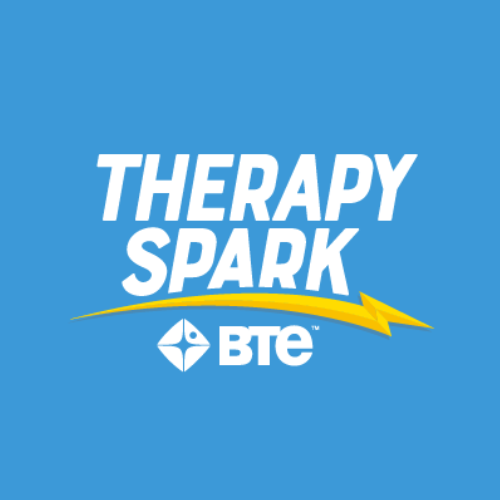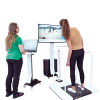
What is Passive Exercise?
Treatment GuidelinesPassive exercise is movement performed on the body without voluntary muscle contraction from the person. A therapist, caregiver, or mechanical device moves joints through a comfortable, controlled range of motion (ROM). This therapeutic approach helps maintain mobility, protect soft tissues, and reduce secondary complications when patients cannot actively move or must limit effort (e.g., early post-op, neurological impairment, prolonged bed rest).
How Passive Exercise Works
Passive exercise uses external force to create movement while the patient stays relaxed. Motion is guided within a pain-free range, respecting surgical precautions and tissue-healing timelines.
Key characteristics of passive exercise include:
- No voluntary muscle effort: The patient does not actively contract the prime movers.
- External force requirement: Movement is applied by a clinician/caregiver or device.
- ROM and tissue health focus: Prioritizes joint nutrition, capsular extensibility, and soft-tissue glide.
- Medical setting application: Common in hospitals, rehab centers, skilled nursing, and home care.
- Therapeutic purpose: Reduce stiffness/contracture risk, support circulation, and prepare for active or active-assisted training.
Typical dosing guidance (adjust per plan of care): slow, controlled repetitions (≈5–10 seconds each), 10–15 reps per joint, 1–2 sessions/day, with longer holds for gentle stretching as tolerated.
The following table illustrates the key differences between passive and active exercise:
| Exercise Type | Muscle Effort Required | Who Controls Movement | Primary Purpose | Typical Settings |
| Passive | None (patient relaxed) | External force (therapist/caregiver/device) | Maintain joint mobility; protect tissues; prevent complications | Hospitals, rehab centers, home care |
| Active | Voluntary contraction by patient | Patient controls movement | Build strength/coordination; improve fitness and function | Clinics, gyms, home exercise programs |
Methods and Techniques for Passive Exercise
Passive exercise spans manual techniques and device-assisted options. Selection depends on diagnosis, precautions, tolerance, and goals.
| Type of Passive Exercise | Method/Who Performs | Specific Examples | Target Body Areas |
| Manual Range of Motion (ROM) | Physical therapist, nurse, trained caregiver | Shoulder flex/abduction arcs, hip/knee ROM, ankle pumps/circles | All major joints (UE/LE, spine when appropriate) |
| Therapist-Performed Stretching | Licensed PT/OT | Hamstring/calf stretches, gentle capsular mobilization within precautions | Muscle groups and joint complexes |
| Continuous Passive Motion (CPM) | Mechanical device operated by physical therapist, nurse, trained caregiver | Post-surgical knee flexion/extension, selected shoulder/elbow protocols | Specific joints in early post-op phases (protocol-dependent) |
| Partner-Assisted Movements | Trained caregiver/family (after instruction) | Assisted arm raises, leg lifts, gentle rotations | Upper and lower extremities |
| Motor-Assisted Passive Cycling/Ergometers | Specialized equipment operated by physical therapist, nurse, trained caregiver | Passive cycling for LE in deconditioned or neurologically impaired patients | Lower (and some upper) limbs for circulation and ROM |
Safety & technique notes:
- Move slowly; avoid forcing end-range or provoking pain/spasm.
- Support the limb proximal and distal to the joint; maintain neutral alignment.
- Respect precautions (e.g., weight-bearing limits, post-op repairs, spinal rules).
- Do not substitute passive exercise for indicated active strengthening when the patient is safe to progress.
- Evidence for CPM is protocol- and population-specific; use when clearly indicated by the surgical/rehab plan.
Medical Benefits Across Different Conditions
Passive exercise contributes to joint, soft-tissue, and circulatory health. Benefits vary by condition and are greatest when integrated into a comprehensive rehab program (positioning, skin care, mobility training, prophylaxis as indicated).
| Medical Condition/Situation | Primary Benefits | Specific Applications | Expected Outcomes |
| Stroke Recovery | Maintain joint mobility; manage tone/spasticity; provide sensory input | Daily UE/LE ROM, scapular glides, gentle prolonged holds | Preserved ROM; reduced contracture risk; improved comfort |
| Spinal Cord Injury | Support circulation; prevent contractures; reduce edema | Structured multi-joint ROM program; passive cycling when appropriate | Maintained flexibility; fewer secondary musculoskeletal issues |
| Post-Surgical Rehabilitation | Protect healing tissues; reduce stiffness; respect surgical protocols | CPM (when prescribed), gentle manual ROM within precautions | Smoother ROM recovery; prep for active rehab phases |
| Prolonged Bed Rest/Immobilization | Support venous return; joint lubrication; pressure-area relief adjunct | Scheduled limb ROM, repositioning, ankle ROM | Reduced stiffness; circulation support (as part of a broader DVT-prevention bundle) |
| Arthritis Management | Pain modulation; synovial fluid distribution; ease of movement | Gentle, pain-free ROM within tolerance | Improved comfort; maintained daily-task mobility |
| Neurological Disorders (e.g., PD, MS) | Sensory input; tone/rigidity management; movement priming | Rhythmical ROM, slow sustained stretches | Easier positioning; reduced rigidity; readiness for active work |
Key therapeutic benefits include:
- Joint health maintenance: Helps prevent stiffness and contractures, preserving capsular and muscular extensibility.
- Circulatory support: Aids venous return and edema management; pair with physician-directed VTE prophylaxis when indicated.
- Pain modulation: Gentle motion can decrease guarding and improve comfort.
- Tissue protection: Maintains glide of tendons/nerve beds; supports skin integrity with positioning.
- Functional preparation: Keeps joints “available” for later active training and task practice.
Cautions/contraindications (clinical judgment required): unstable fractures, acute joint infection, unhealed graft/repair without clearance, acute DVT without anticoagulation, severe osteoporosis with fracture risk, painful heterotopic ossification, autonomic dysreflexia triggers in SCI, and any worsening pain, numbness, dizziness, or distress—stop and reassess.
Final Thoughts
Passive exercise is a foundational rehab tool when patients cannot yet move actively. Done correctly—slow, aligned, and within a pain-free range—it preserves motion, protects tissues, and prepares the body for active recovery. Its impact is greatest when combined with positioning, education, skin care, progressive active/assistive exercise, and mobility training. Facilities can enhance outcomes by standardizing protocols, training caregivers, and using appropriate devices (e.g., CPM or motor-assisted cycling) only when indicated by the plan of care.
For programs seeking scalable implementation, professional-grade equipment and clear workflows from organizations like BTE Technologies can support consistent technique, dosing, and documentation—helping teams deliver safe, effective passive exercise across care settings.

